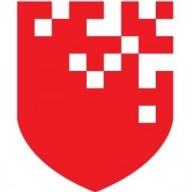


RedSeal and Tenable Vulnerability Management are prominent in network security and vulnerability assessment. Tenable appears to have an edge due to its advanced assessment capabilities, making it appealing despite higher pricing.
Features: RedSeal offers network mapping, security modeling, and risk scoring that help visualize threats effectively. Tenable provides extensive scanning, continuous monitoring, and robust integration with security tools for comprehensive vulnerability insights.
Room for Improvement: RedSeal could enhance its integration capabilities with other tools and expand its global threat intelligence. Increasing automation in risk assessments and reporting would also be beneficial. Tenable could improve its configuration auditing features and the user interface to make navigation more intuitive. Enhancing real-time scanning capabilities and expanding integration options could further strengthen its offering.
Ease of Deployment and Customer Service: RedSeal excels in streamlined deployment with easy installation and support focused on straightforward solutions. Tenable offers cloud-based deployments that are quick to set up, emphasizing flexibility and scalability with a wide array of technical support to assist customers.
Pricing and ROI: RedSeal offers lower initial deployment costs, appealing to cost-sensitive entities, with significant ROI through effective risk management. Tenable, though generally higher priced, provides value through comprehensive vulnerability management capabilities, often justifying the investment with improved ROI outcomes due to its extensive feature set.



| Company Size | Count |
|---|---|
| Small Business | 1 |
| Midsize Enterprise | 1 |
| Large Enterprise | 7 |
| Company Size | Count |
|---|---|
| Small Business | 20 |
| Midsize Enterprise | 2 |
| Large Enterprise | 21 |
Zafran Security integrates with existing security tools to identify and mitigate vulnerabilities effectively, proving that most critical vulnerabilities are not exploitable, optimizing threat management.
Zafran Security introduces an innovative operating model for managing security threats and vulnerabilities. By leveraging the threat exposure management platform, it pinpoints and prioritizes exploitable vulnerabilities, reducing risk through immediate remediation. This platform enhances your hybrid cloud security by normalizing vulnerability signals and integrating specific IT context data, such as CVE runtime presence and internet asset reachability, into its analysis. No longer reliant on patch windows, Zafran Security allows you to manage risks actively.
What are the key features of Zafran Security?
What benefits can users expect from Zafran Security?
In industries where security is paramount, such as finance and healthcare, Zafran Security provides invaluable protection by ensuring that only exploitable vulnerabilities are addressed. It allows entities to maintain robust security measures while allocating resources efficiently, fitting seamlessly into existing security strategies.
RedSeal’s network modeling and risk scoring platform builds an accurate, up-to-date model of an organization’s entire, as-built network to visualize access paths, prioritize what to fix, so you can target existing cybersecurity resources to protect your most valuable assets. With RedSeal’s Digital Resilience Score, decision makers can see the security status and benchmark progress toward digital resilience.
Managed in the cloud and powered by Tenable Nessus, Tenable Vulnerability Management (formerly Tenable.io) provides the industry's most comprehensive vulnerability coverage with real-time continuous assessment of your organization. Built-in prioritization, threat intelligence and real-time insight help you understand your exposures and proactively prioritize remediations.
We monitor all Risk-Based Vulnerability Management reviews to prevent fraudulent reviews and keep review quality high. We do not post reviews by company employees or direct competitors. We validate each review for authenticity via cross-reference with LinkedIn, and personal follow-up with the reviewer when necessary.